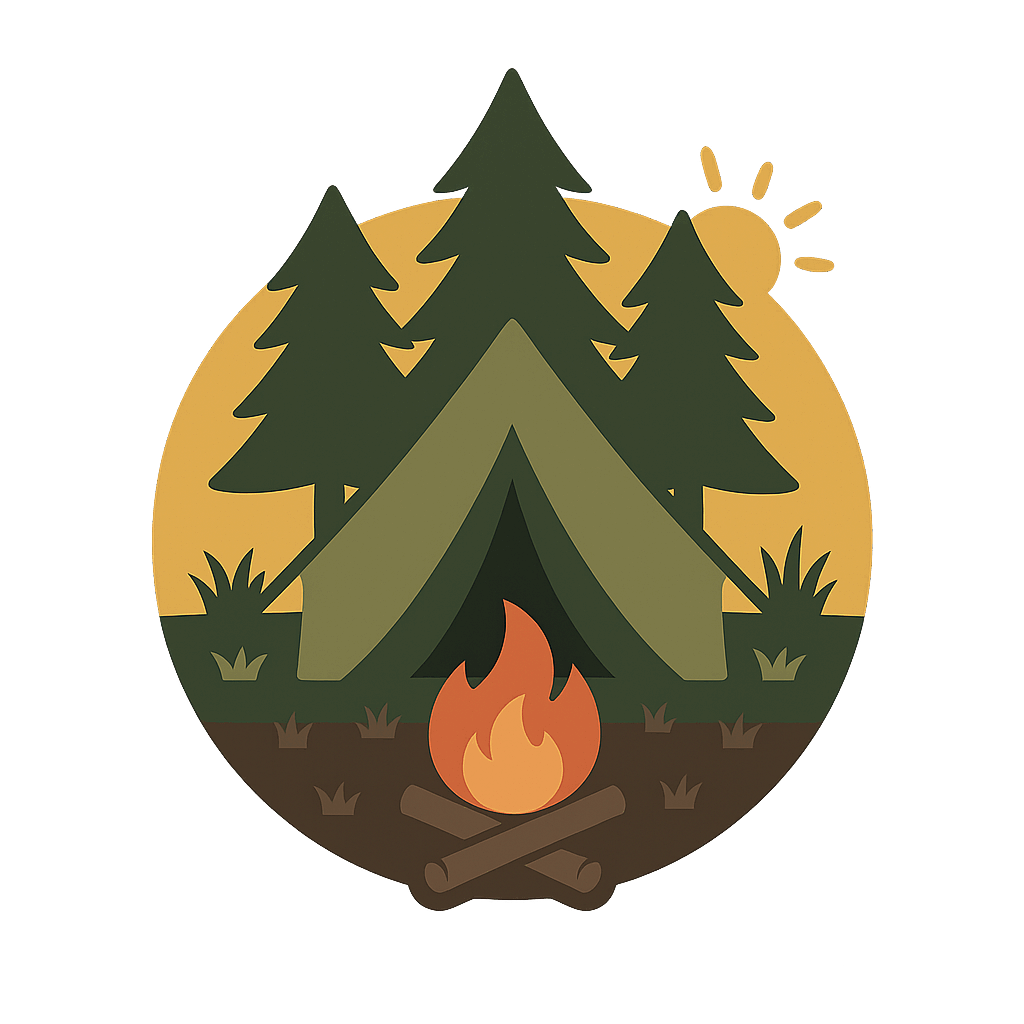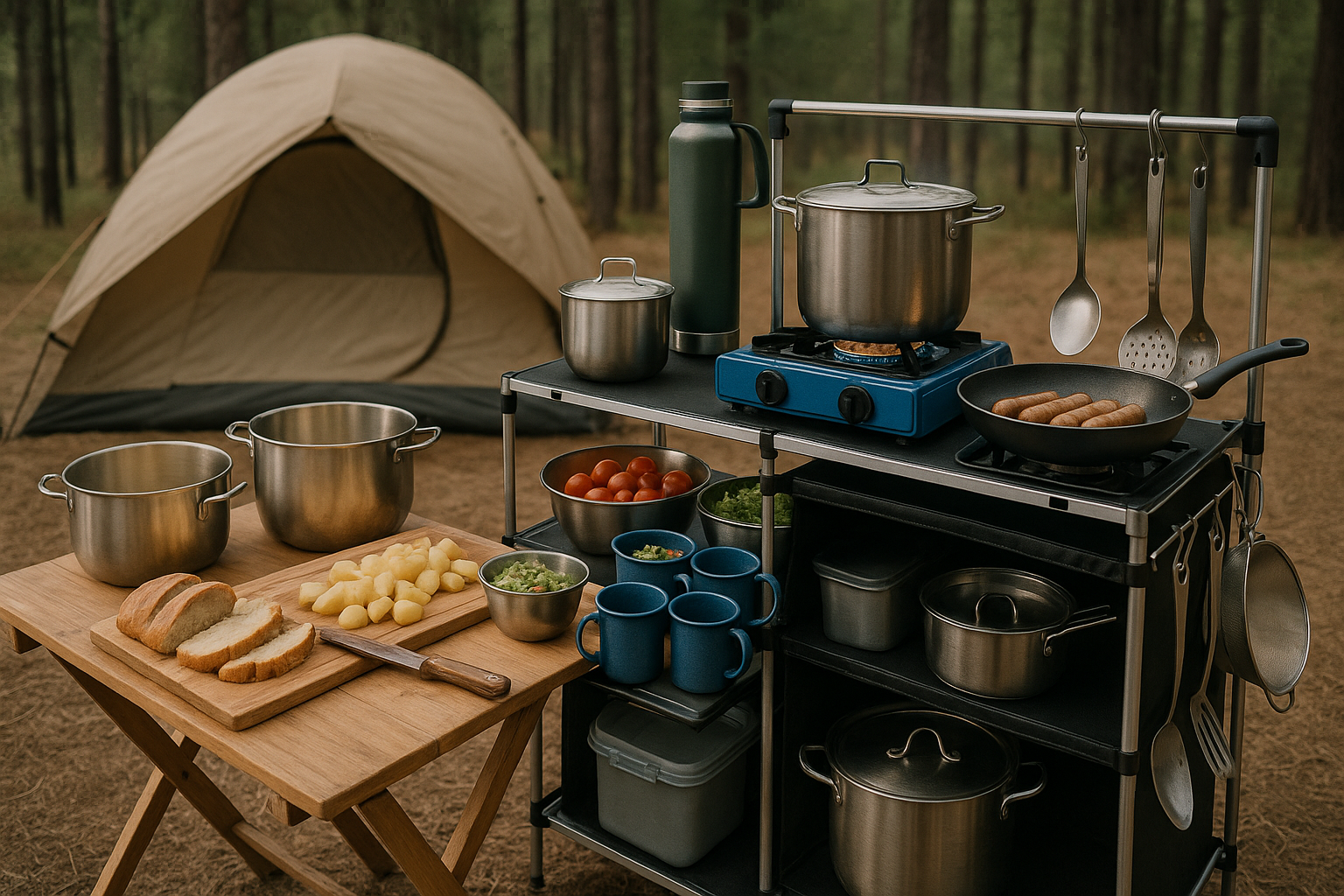When you’re camping with a group—whether it’s family, friends, or fellow adventurers—meals become a logistical puzzle. Add cramped campsites, limited gear, and no-flame rules, and suddenly cooking for a crowd feels like an impossible mission.
But here’s the truth: with the right scalable camping kitchen setup, you can turn even the smallest site into a group-friendly survival kitchen.
This isn’t about fancy Instagram setups—it’s about real-life hacks, efficient gear, and clever layout strategies to keep everyone fed and happy.
🔥 The Problem: Cooking for Many in a Small, Resource-Limited Camp
Most camping gear is designed for solo or couple-sized groups.
When your crew size doubles or triples, challenges multiply:
- Limited space for stoves, prep areas, and coolers
- Inadequate cookware capacity for bulk meals
- Longer cooking times for large batches
- Risk of food safety issues in tight conditions
If you’re in a remote area with minimal infrastructure, these problems can escalate into real survival challenges.
🏕️ Scalable Solutions: Build a Group-Ready Camp Kitchen in Tiny Spaces
Let’s break it down into gear, layout, and process hacks that scale your kitchen without overwhelming your site.
🔪 1️⃣ Gear That Multiplies Cooking Power Without Taking Space
✅ Modular Cookware: Instead of oversized pots, bring stackable or nesting cookware sets. They take minimal space but allow simultaneous cooking.
- Look for sets with multiple pot sizes and universal lids.
- Example: Sea to Summit X-Set or MSR Flex 4 system.
✅ Double-Burner Compact Stoves: A foldable double-burner stove (like the Camp Chef Everest or Coleman Triton) lets you cook two dishes at once in a compact footprint.
✅ Collapsible Prep Surfaces: Compact tables with drop-down or fold-out wings double your prep space without requiring a larger footprint.
✅ Stackable Food Storage: Use square or rectangular nesting containers to maximize cooler and storage space.
- Pro tip: Store ingredients pre-portioned for meals to minimize handling and waste.
🏞️ 2️⃣ Smart Layouts for Tiny Camps
Tiny camps don’t mean chaotic setups. Use zoning strategies:
🏕️ Zone 1: Cooking Area
- Position stoves or cookers near a windbreak (rock, tarp).
- Use foldable wind guards to stabilize flames.
- Keep fuel and water sources within arm’s reach.
🪑 Zone 2: Prep & Clean
- Set up a collapsible table or flat surface near the cooking zone.
- Use a hanging trash bag system to keep waste off the ground.
- Employ collapsible basins or dry bags for quick washing.
🍽️ Zone 3: Serving & Eating
- Designate a clean area with seating (logs, chairs).
- Use stackable plates and reusable cutlery for space savings.
🔥 Pro Tip: Arrange these zones in a U-shape around a central area to optimize flow and minimize crossing paths.
🧠 3️⃣ Group-Friendly Cooking Techniques
When cooking for a crowd, batch-cooking efficiency is everything.
✅ One-Pot Wonders: Think stews, chilies, and rice dishes that cook in a single pot. Add protein and veggies toward the end for even cooking.
✅ Foil Packet Meals: Pre-assemble individual portions in foil packets. Cook them directly on a stove griddle or in a solar cooker. No plates, no cleanup.
✅ Pre-Prepped Ingredients: Chop, marinate, or pre-cook ingredients at home. Store them in vacuum-sealed bags or containers for grab-and-go cooking.
✅ Layered Steam Cooking: Use stackable steamers (like bamboo baskets or tiered pots) over one burner to cook grains, veggies, and proteins at once.
✅ Group-Friendly Snacks: Opt for no-cook high-calorie snacks (trail mix, cheese, jerky) to keep energy up while cooking.
🌬️ 4️⃣ Dealing with Wind and Weather in Tight Camps
Wind and sand can disrupt even the best setups.
- Use a low-profile stove with a built-in windscreen.
- Pitch your cooking area near natural windbreaks.
- Anchor tarps or reflective blankets with rocks to shield the cooking zone.
🏕️ 5️⃣ Fire-Free, Scalable Solutions (for Fire-Banned Zones)
🔥 Portable Butane or Propane Stoves: Compact models offer quick heat and reliable flame in wind. Keep multiple small canisters rather than one large one for backups.
🌞 Solar Cookers: Foldable solar ovens or reflectors can bake and simmer without flames. They’re especially useful for low-and-slow dishes like rice or baked beans.
💡 USB-Rechargeable Appliances: Compact, rechargeable blenders or frothers for group drinks and quick meal preps.
📋 Scalable Camping Kitchen Gear Checklist
| Item | Purpose |
|---|---|
| Modular cookware set | Flexible, stackable pots & pans |
| Double-burner stove | Cook multiple dishes in minimal space |
| Foldable prep table | Compact surface for chopping & cleaning |
| Nesting food containers | Save space & organize ingredients |
| Collapsible sink/basin | Easy cleanup without bulky gear |
| Portable solar cooker | Fire-free batch cooking |
| Rechargeable light | Nighttime cooking & prep |
| Wind guards/tarps | Control cooking environment |
🍲 Real-Life Group Survival Tip
“In a desert camp with a 6-person crew, we used a single double-burner stove and pre-packed foil meals. Everyone prepped their own foil packet the night before. At mealtime, we just layered the packets on the griddle, rotated them, and served hot food to the group in under 30 minutes. Zero mess, zero stress.”
— Carlos T., overlander and desert camper
💡 Final Thoughts: Cook for a Crowd Without Chaos
Cooking for a crowd in a tight camp doesn’t mean stress and mess. With the right scalable gear, strategic layout, and batch-cooking techniques, you can keep everyone fed, hydrated, and happy—even in challenging environments.
🔥 Start simple: Modular cookware, collapsible tables, and smart fuel management.
🔥 Plan meals: Pre-prep ingredients, batch cook, and use solar or low-fuel gear.
🔥 Stay organized: Zone your camp and use stackable systems for efficiency.
Because when you’re camping with a crowd, the kitchen is the heart of survival.
👉 Ready to level up your camping kitchen? Share this post with your crew and plan your next group adventure with confidence.

